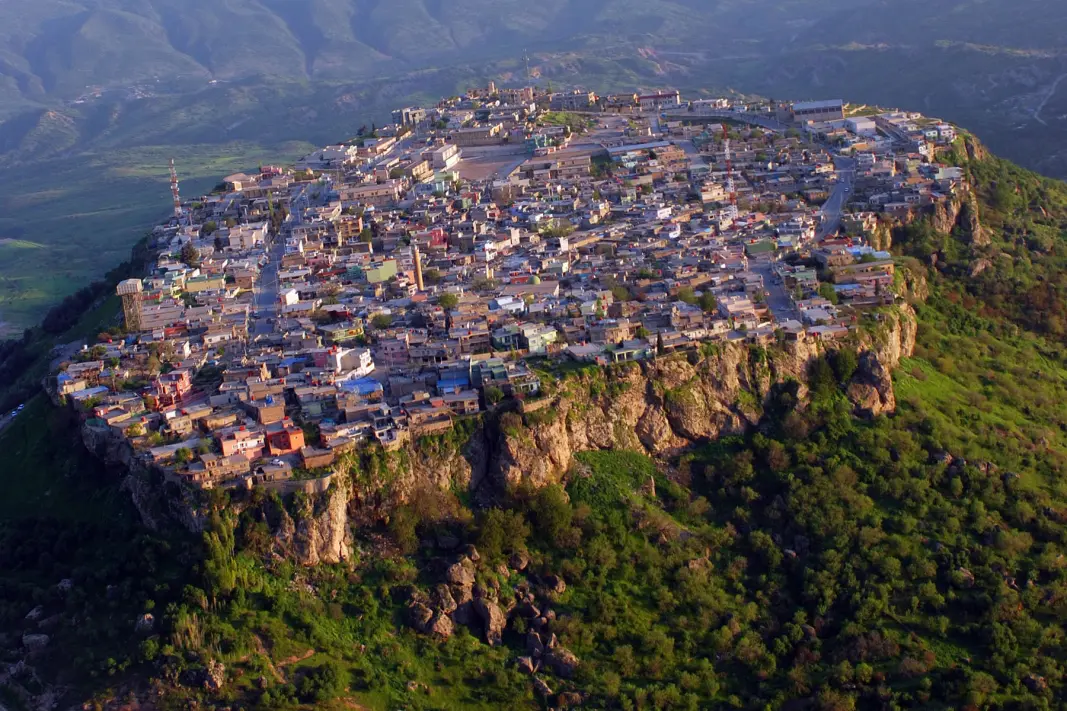By Prof. M.R. Izady
The most prominent geophysical feature of Kurdistan is clearly its mountainousness. Kurdistan at present is composed primarily of the area of the central and northern Zagros, the eastern two-thirds of the Taurus and Pontus, and the northern half of the Amanus mountains. The two large, detached Kurdish enclaves are in the Rivand heights of the eastern section of the Alburz mountains of northeastern Iran, in the province of Khurasân, and in the central Pontian mountains in central and north-central Anatolia, neighboring the Turkish capital of Ankara. In addition to these, there have been for centuries many smaller Kurdish enclaves in areas ranging from the volcanic highlands of western Baluchistan, to the central Alburz range in northern Iran, to the Ulu Mountains on the Aegean coast of western Turkey.
In contiguous Kurdistan, as well as in the many far-flung Kurdish settlements, mountains are the single most important natural phenomenon, and they have shaped the Kurdish history, people, tradition, and culture. Kurdish domains end abruptly where the plains begin.
Northern Kurdistan has the highest average elevation. In the words of William Eagleton, this is the home of "roaring torrents, shadowed canyons and suspension bridges." Central Kurdistan, on the other hand, has the lowest average elevation, with the warmest, often balmy, climate in all of Kurdistan. The other sections of the land range between these two extremes. The Kurdish mountains form a rampart to the Iranian and Anatolian Plateaus to the east and west, respectively, separating them from the flat plains of Arabia to the south and southwest, and the Black Sea basin to the north. The central massif runs the entire length of Kurdistan from one end to the other like a mighty spinal column.
The highest points in Kurdistan are, respectively, Mt. Alvand in the south (in Iran) at 11,745 feet, Mt. Halgurd (or Algurd) in north-central Kurdistan (in Iraq) at 12,249 feet, Mt. Munzur in the west (in Turkey) at 11,644 feet, and Mt. Ararat in the north (in Turkey) at 16,946 feet.
Sources: The Kurds, A Concise Handbook, By Dr. Mehrdad R. Izady, Dep. of Near Easter Languages and Civilization, Harvard University, USA, 1992
Further Readings and Bibliography: Y. Abul Haggag, "North-cast Iraq: A Physiogtaphical Study," Bulletin de la Societe de Geographie degvpte 33 (1960); H. Bobek, "Forshungen im Zentralkurdischen Hochgebirge zwischen Van- und Urmia-See (Sudest-Anatolien und West-Azerbaidjan)," Petermann's Geographische Mitteilungen 84 (1938); R. Clayton, "The Mountains of Kurdistan," Alpine Journal (1887); Francis Halley, "The Gorge of the Qal'a Cholan and its Confluence with the Lesser Zab. Notes of a Tour in South Kurdistan in 1921," Geographical Journal 86-2 (1935); Jacques de Morgan, Relation sommaire d'un voyage en perse et dans le kurdistan (Paris, 1895).

